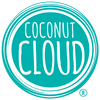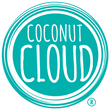Food Coloring – Natural vs. Synthetic, and Why it Matters
It’s getting to be that time of year…where the snow finally begins to melt (in some parts of the country!), and little green leaves and flower buds start to poke their heads through to find the sun. Spring colors will soon be all around; and we are getting ready to enjoy vibrant veggies, fruits, brightly colored Easter treats, popsicles, and more for the Spring and Summer seasons.
Colors inspire us and can make any drink, baked good, or savory dish all the more appealing; both visually and nutritionally. Because of that, we wanted to explore the pros and the cons of using both natural and artificial or synthetic color products in your favorite dishes. Read on to see what we learned and also the fun, healthful, and COLORFUL recipes we found.
Both natural and artificial are used in so many of the foods, drinks, and candies that Americans consume on a daily basis. They are even used in things like salmon, salad dressings, and medications; things you would never think of. According to Healthline, artificial food dye consumption has increased by 500% in the last 50 years, and children are the biggest consumers. That’s a crazy statistic and we wanted to know the potential impact of consuming these synthetic dyes in such quantities.
What are they?
To start, artificial food dyes are mostly made from petroleum. They are used to enhance the color of food, in theory, so it’s visually more appealing to the consumer. Food manufacturers often prefer artificial food dyes over natural food colorings, such as beta carotene and beet extract, because they produce a more vibrant color.
Are synthetic dyes safe?
While all of the artificial dyes that are currently used in food have gone through testing for toxicity and have been approved by the US Food and Drug Administration (FDA) and the European Food Safety Authority (EFSA), not everyone agrees that they are safe to use/consume. The most popular food dyes are Red 40, Yellow 5 and Yellow 6. These three make up 90% of all the food dye used in the US. A few other dyes are approved in some countries, but banned in others. Green No. 3, also known as Fast Green, is approved by the FDA but banned in Europe.
Negative effects on your health?
In 1973, a pediatric allergist claimed that hyperactivity and learning problems in children were caused by artificial food colorings and preservatives in food. There were very little findings to back up this claim. Since then, several additional studies have found a small but significant association between artificial food dyes and hyperactivity in children. One clinical study found that removing artificial food dyes from the diet, along with a preservative called sodium benzoate, significantly reduced hyperactive symptoms. While effects from food dyes have been observed in children with and without ADHD, some children seem much more sensitive to dyes than others. While most food dyes did not cause any adverse effects in toxicity studies, there is some concern about possible contaminants in the dyes. Red 40, Yellow 5 and Yellow 6 may contain contaminants that are known cancer-causing substances. Benzidine, 4-aminobiphenyl and 4-aminoazobenzene are potential carcinogens that have been found in food dyes. These contaminants are allowed in the dyes because they are present in low levels, which are presumed to be safe.
Can you be allergic to artificial dyes?
Some artificial food dyes can cause allergic reactions. In multiple studies, Yellow 5 has been shown to cause hives and asthma symptoms. Interestingly, people who have an allergy to aspirin seem to be more likely to also be allergic to Yellow 5 as well. In a study conducted in people with chronic hives or swelling, 52% had an allergic reaction to artificial food dyes.
What’s our takeaway?
Based on even the limited information we found (above), our conclusion was that the natural route is still the best route to go. While the consumer of 30 years ago may have valued an bright, artificially colored cereal; the consumer of today is savvier and more informed than ever; and we’d like to bet that people are willing to give up a neon-red Fruit Loop if it means putting a slightly less-red, cleaner food product into their body. Why go artificial when nature has already provided some of the brightest most vibrant colors imaginable?
We’d discovered that some of the most shocking bright colors can be found, naturally occurring, in fruits, vegetables, and even algae worldwide. Read on below to explore some of our fav top finds and recipes to go with:
Go green! Literally. This recipe for Sweet Spinach muffins from SuperHealthyKids is a tried and true one in our household. I must have made 20+ batches of these over the years. It is also easy to make this dairy free or vegan; simply swap in nut milk, vegan butter, and a flax egg instead of the listed ingredients. This is a great recipe to make for St. Patrick’s day as well!
Big Blue world - Blue spirulina and Blue Butterfly Pea Flowers are both naturally occurring, blue-colored plants that will give your drinks and baked goods a gorgeous blue color without anything artificial. How crazy is this cobalt blue coloring?! We will definitely be using this ingredient all summer to brighten up ALL our warm-weather treats.
Magic Butterfly Pea Lemonade
Ingredients
- 5 cups of filtered water
- 2-2.5 cups granulated sugar (depending on how sweet you like it) *stevia or other sweetener alternative can also be used here as long as it’s a 1:1 swap in.
- 1 cup freshly squeezed lemon juice.
- 1 tsp of Butterfly Pea Flower Powder
Instructions
- In a saucepan, Combine 3 cups water with the sugar.
- Add Butterfly Pea Powder and stir it well.
- Bring to a simmer. Remove from heat.
- Combine lemon juice and 2 cups of water.
- Fill glass with ice, pour cooled butterfly pea syrup in glass, filling about half way.
- Pour lemon mixture over top.
Go Pink or Go Home – We know everyone loves a pink drink (thank you Starbucks), so why not make your own, better-for-you version at home and cut the sugar and the dairy?! We say, let’s do it! Check out this vegan Dragonfruit Pink Drink recipe that is naturally so electric pink it will knock your socks off.
And finally, this blog wouldn’t be complete without acknowledging that Coconut Cloud NEVER uses any artificial colors in our products. Even the brightly colored sprinkles in our vegan Birthday Cake hot cocoa are only ever naturally-colored; using ingredients like beet juice, turmeric, and beta carotene to get that carnival of color people love so much. Try out our newest member of the hot cocoa family today.












